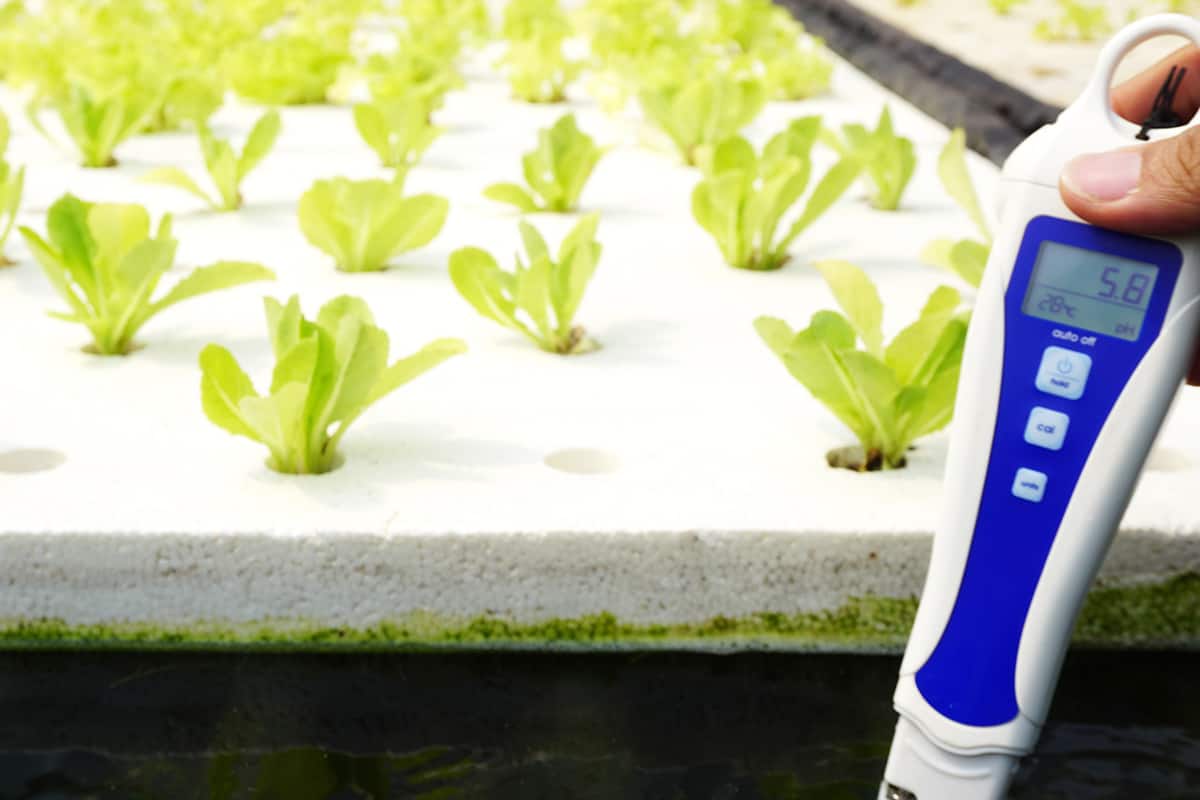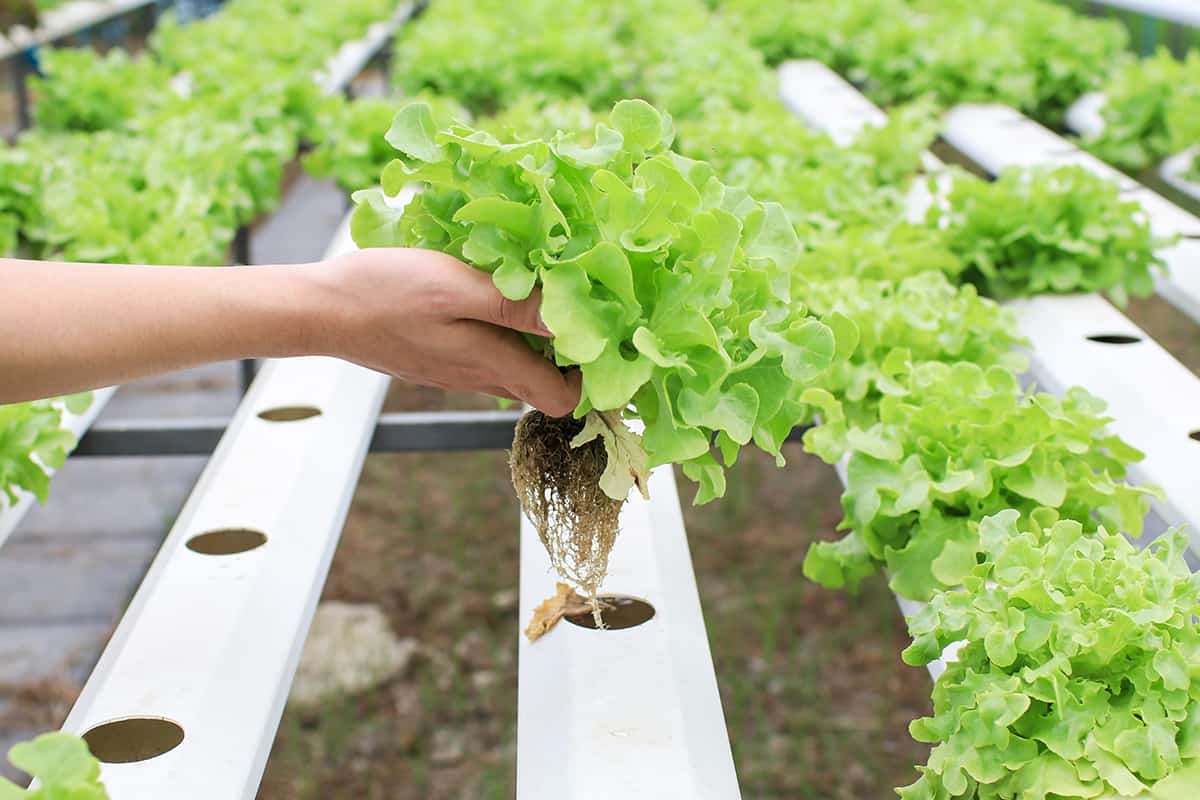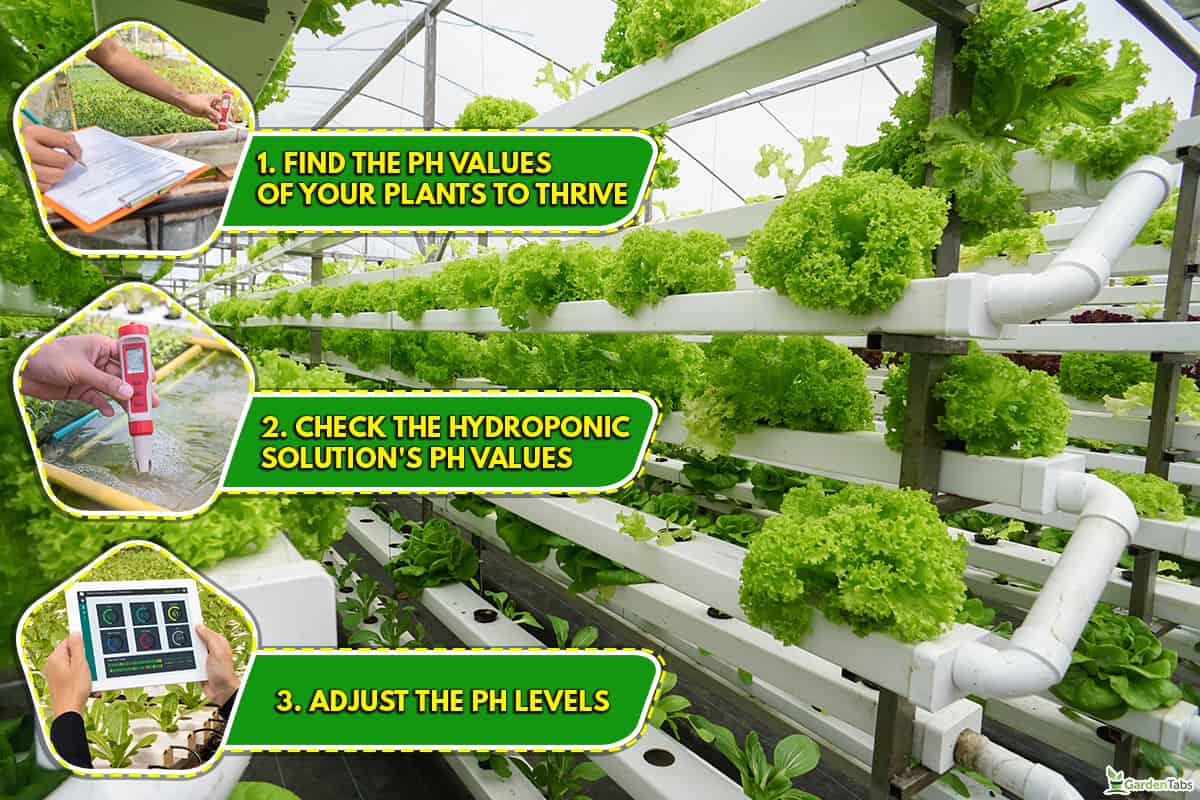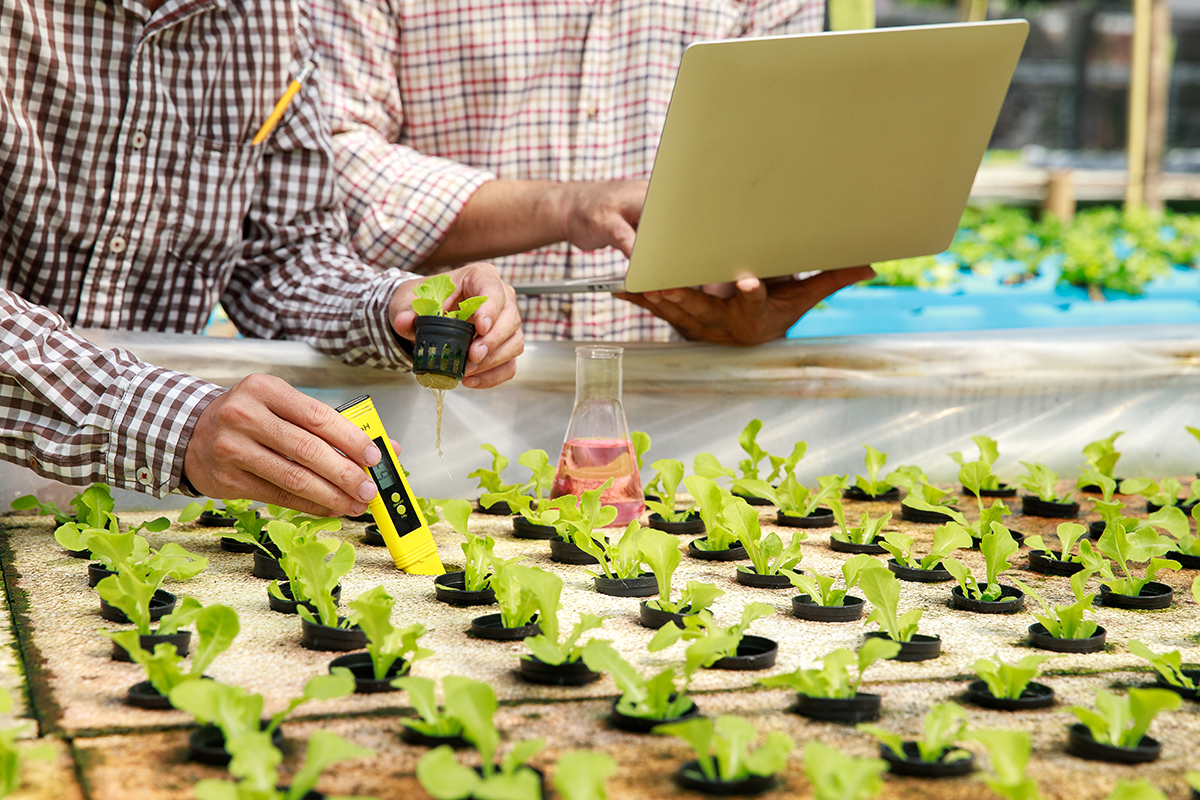One of the most important aspects that any hydroponic grower must routinely check is their water's potential hydrogen (pH) level because an imbalanced pH level can hurt or even kill plants.
Do you want to know what is causing the pH to rise and fall and how to control it? After some in-depth research, this is what we discovered.
The following are the causes of pH rise and drop in hydroponics:
- Raise pH
- Untread water
- Excess nutrients added to the system
- High temperature
- Weak nutrient solutions
- Drop pH
- Contaminated hydroponic systems
- Decomposing roots
- An excessively potent nutrient solution
- Reverse Osmosis (RO) water
To control these occurrences, below are some steps to take:
- Find the pH values that will make your plants thrive.
- Check the hydroponic solution's pH values.
- Adjust the pH levels.
In this article, we'll go into great detail about each of the causes and solutions for resolving the imbalanced pH. We'll also cover several products you can buy to control the pH of your hydroponic system. With that said, let's dive right into this topic!
What Causes pH To Rise Or Drop In Hydroponics?

A liquid's pH is a measurement of loose hydrogen present but not linked to any other molecules in a liquid. Every plant has a unique pH range that it thrives.
Keeping track of the pH level in your hydroponic system is crucial since different nutrients are taken by plants more effectively at various pH levels. The pH levels will impact how long your plants live, much like a fish tank.
A high pH, for instance, will prevent your plant from absorbing nutrients because of the excess alkalinity in the water. There are several reasons why your pH may be dropping too.
Below is a detailed explanation of these phenomena.
A Rise In pH
As a hydroponic system gets more alkaline, pH levels are likely to rise over time, and the reasons are the following:
Untread Water
Ensure that the water in your hydroponic system contains many minerals and has a higher pH level if it is hard or untreated.
You need to regulate the pH level because adding nutrients to hard water could cause it to rise even higher.
Excess Nutrients Added To The System
The majority of nutrients have a slight acidity. The system gradually loses its acidity and becomes alkaline as the plants progressively absorb these nutrients through their root systems.
The pH values will steadily increase until you add more nutrients over time.
High Temperature
Due to the heated water in the reservoir by the high temperature, carbonic acid is converted back into carbon dioxide and evaporates out of the water.
Thus, when there is less carbonic acid in the water, the hydronic ph in the reservoir continues to rise.
Weak Nutrient Solutions
The potency of your nutrient solution may also have an impact on pH drift. If the solution is excessively diluted or weak, the pH will likely rise quickly as the plants take up the nutrients in the solution.
On the other hand, if the solution is too rich, the pH will decrease until it reaches zero.
A Drop In pH
There are a few potential reasons why the pH of your hydroponic solution is continuing to decrease, and some of them are the following:
Contaminated Hydroponic Systems
The most frequent reason for pH fluctuations is dirt particles. These can be added to your hydroponic system by misting it or adding nutrients.
Furthermore, they will start settling on the plant's roots and any other surface, such as grow beds, pumps, tubing, or anything else you can think of!
Also, bacteria thrive in water too. The warm, still water with an abundance of nutrients and energy in an indoor hydroponic system is the ideal setting for bacteria.
Bacteria will increase if your system isn't flushed frequently, just like in a pond where algae grow because the water is stagnant. Dropping pH is a common problem in such filthy systems.
Decomposing Roots

Numerous hydroponics authorities advise monitoring your plants' root systems regularly. Your plants may be too crowded, or you may not maintain fresh growth media in your system if their roots are rotting too soon.
Plants also shed aging tissue, much like humans do. Your plants might decompose in the water if they lose root tissue. Even healthy root tissue can occasionally start to rot if the growing medium isn't changed frequently enough.
The pH of the water is lowered due to the release of acids into the environment caused by the breakdown of organic materials.
An Excessively Potent Nutrient Solution
Your hydroponic system's newly added nutrients contain a small amount of acid. Thus, overfeeding your plants might decrease pH and increase nutrient release from the plants.
That is why it is essential that you properly blend the nutrient solution.
To achieve it, it is generally recommended to use a high-quality mixture created especially for hydroponic systems and to change it frequently.
RO Water
RO is a fantastic way to remove impurities from water, such as all minerals, bacteria, and solutes. But it also removes all the vital minerals that plants require to develop and thrive.
In most cases, even if you can add acids or bases to the water, compounds in the water will retain or release "free" hydrogen as it is added or removed.
The issue with RO water is that its purity prohibits it from keeping a stable pH.
How To Control Unbalanced pH Level?

The healthy growth of plants in hydroponic gardening depends on maintaining the proper pH levels. Plants won't take up minerals from the water solution if the hydroponic solution is too acidic or alkaline.
Worry no more because tools and products are available in the market and even in your households to solve the unbalanced pH of your hydroponic.
Understanding the pH range at which your planned crops flourish is essential. After that, you can make the necessary adjustments. Below is a detailed guide to help you have an equilibrium hydroponic system.
1. Find The pH Values That Will Make Your Plants Thrive
Determining what pH your plant thrives at helps you decide whether to raise or lower the pH.
On a scale of 0-14, find out if they grow best when the pH is close to 1 (the most acidic), close to 7 (neutral), or close to 14 (more alkaline).
2. Check The Hydroponic Solution's pH Values

Now that you are aware of the pH condition required for your plant. Purchase a test strip or a liquid test kit if you're on a tight budget. But the most advised tool is a digital pH meter because it is more accurate.
Click here to see this pH test strip on Amazon.
Click here to see this digital pH meter on Amazon.
Regular testing is recommended if you modify the nutritional levels daily, regardless of your chosen instrument. To accurately establish the pH level or the hydroponic, keep regular records.
3. Adjust The pH Levels
You will adjust the pH levels following the results and your plant's needs. Products are available to help you change the pH to the correct level.
Baking Soda & Potassium Carbonate
You need to raise the pH levels if your hydroponic system is acidic and your plants do best in alkaline environments.
Click here to see this baking soda on Amazon.
Click here to see this potassium carbonate on Amazon.
And these products (baking soda and potassium carbonate) are examples of household products you can use to increase pH.
Add these ingredients repeatedly while monitoring pH changes until the required level is reached.
Sulfur & Aluminum Sulfate
Some products can assist you if you want to lower the pH because the surroundings are a bit alkaline and unsuitable for your plants, which do best in acidic environments.
Sulfur and aluminum sulfate are the compounds used most frequently to reduce pH. Due to their high solubility and acidic content, they are the finest options for quick and efficient results.
Click here to see this sulfur powder on Amazon.
Click here to see this aluminum sulfate on Amazon.
Add little by little until your plants are receiving the right amount. If it is a solution, take around two millimeters (ml) of the product, and mix it with your nutrient solution.
After stirring, wait 30 minutes, and then measure the pH. Until you get the desired range for your products, repeat the process.
pH Up And Down
These are ideal products in the market that commonly use now to adjust the pH in the hydroponic. Utilizing a certain amount of pH Up or Down depends on how much you need the pH level to change.
Click here to see these pH Up and Down on Amazon.
Start with 2-3 ml per gallon. After adding, thoroughly stir the mixture, then wait 15 minutes before testing the nutritional solution.
Repeat the procedure until your hydroponic fertilizer solution is between 5.5 and 6.5, or at the optimum range for the plants you are producing.
No worries, use the opposite pH product to adjust if you add too much and your pH level exceeds what you want.
To give you an idea of how to grow plants hydroponically by correcting pH:
To Wrap Things Up

We hope this article helps you understand the pH of your hydroponics.
Make sure to measure the pH frequently and adjust the nutrition solution's pH as soon as you notice it straying outside the 5.5-6.5 range to get the most out of your plants.
Made it to the end? Check out these related articles!







